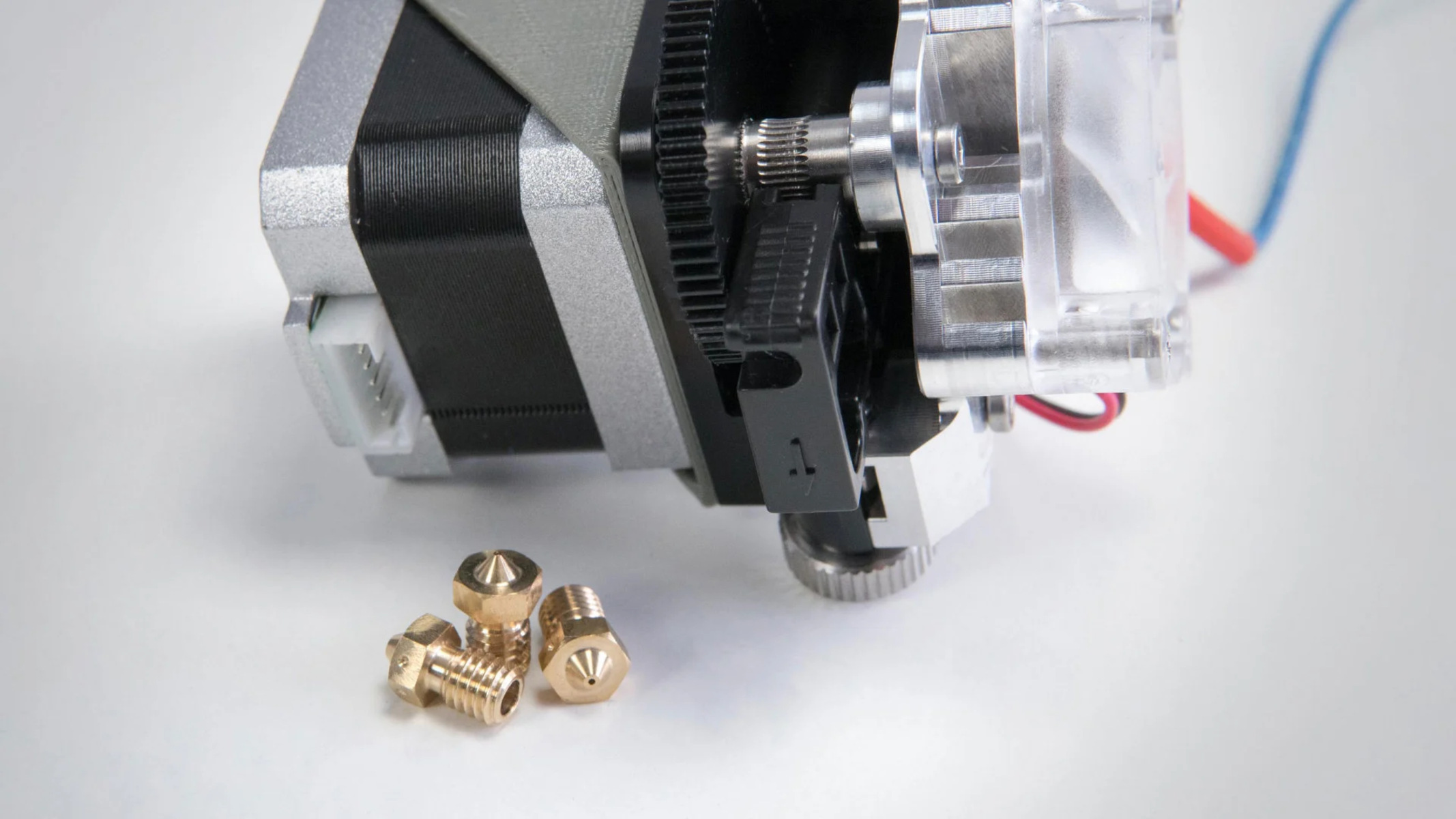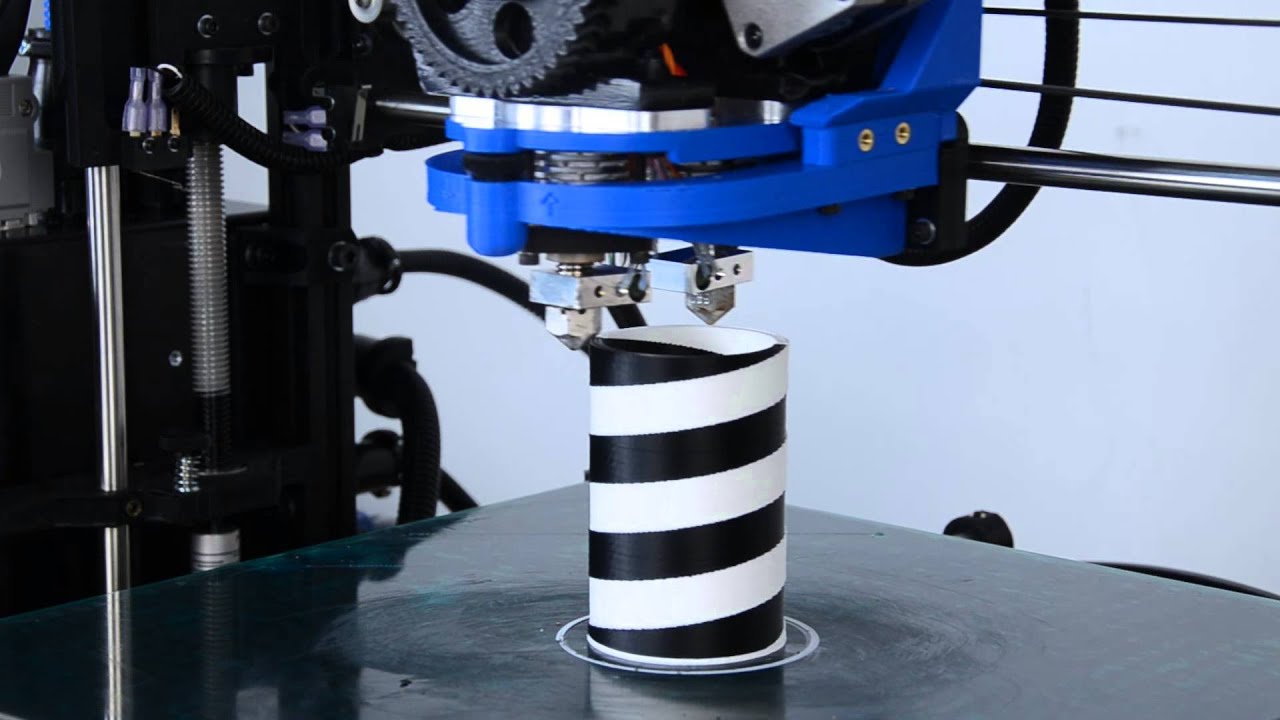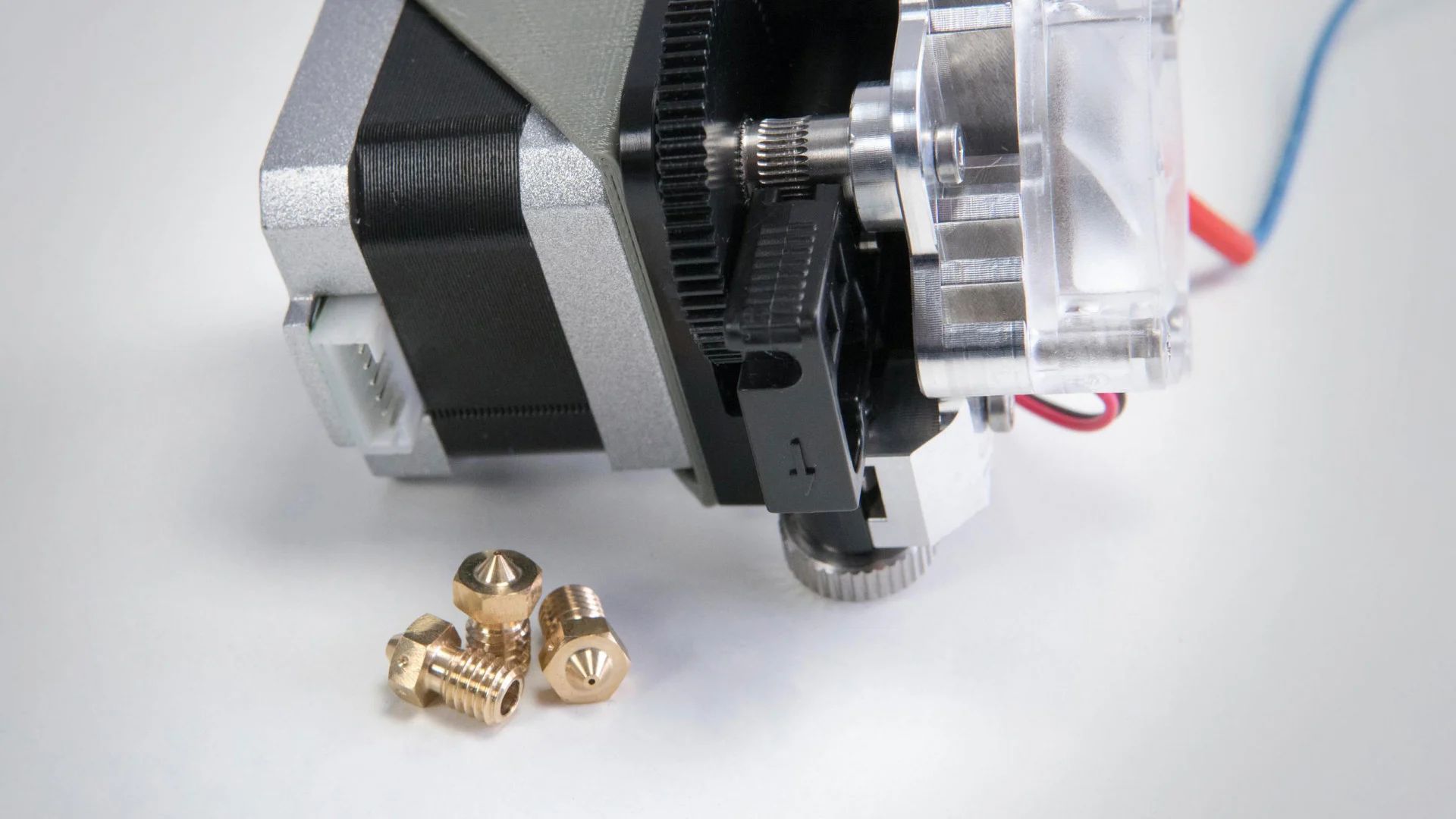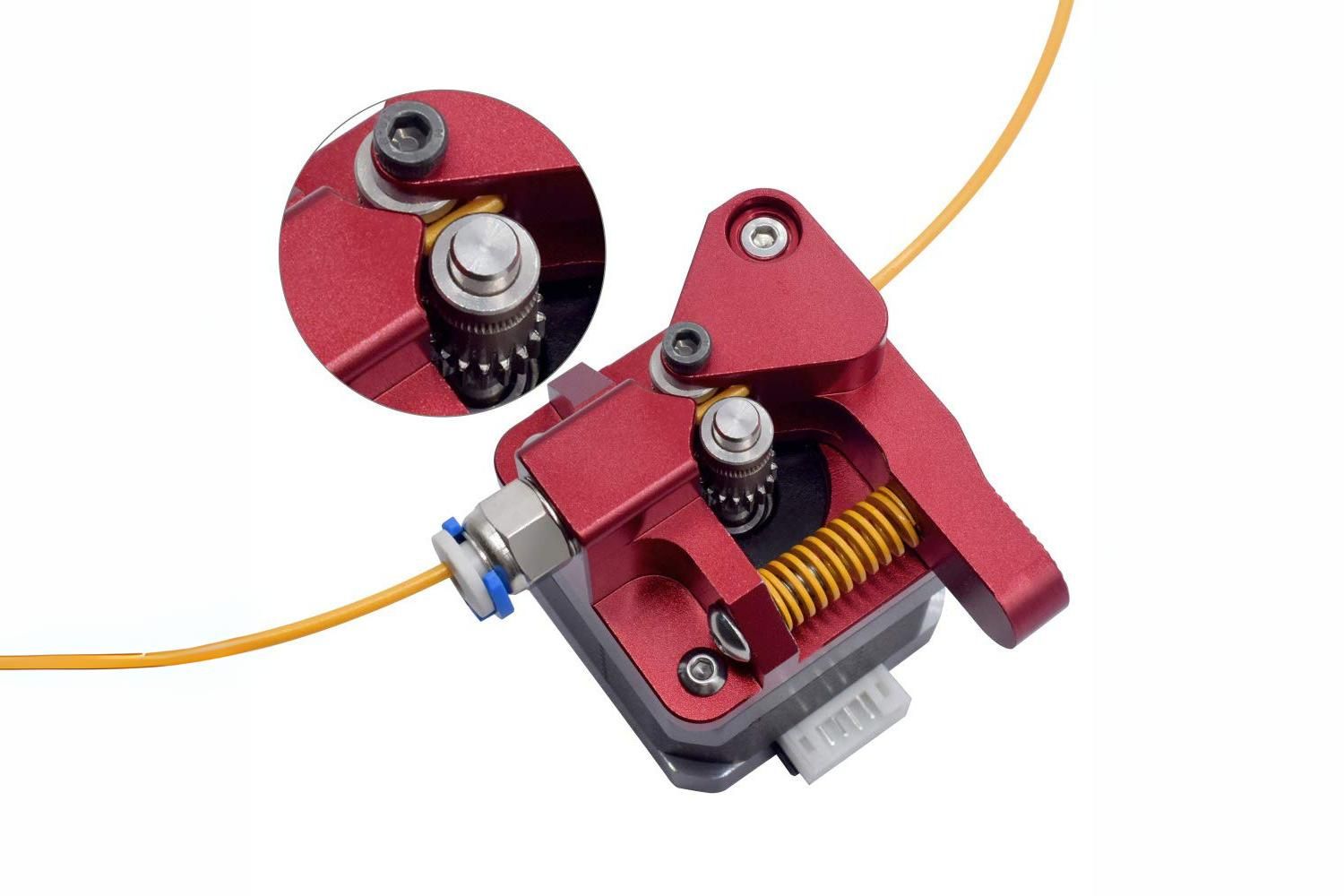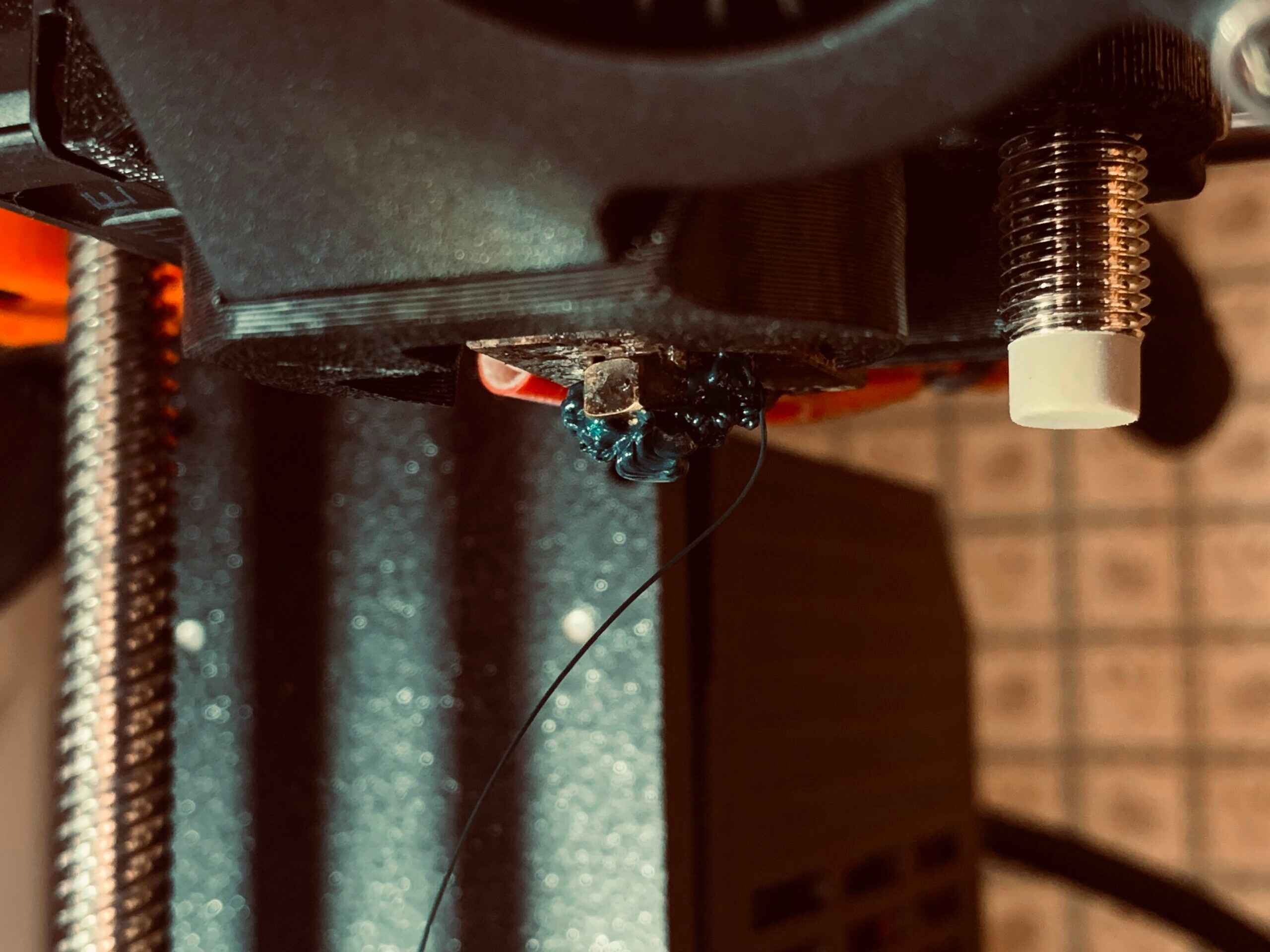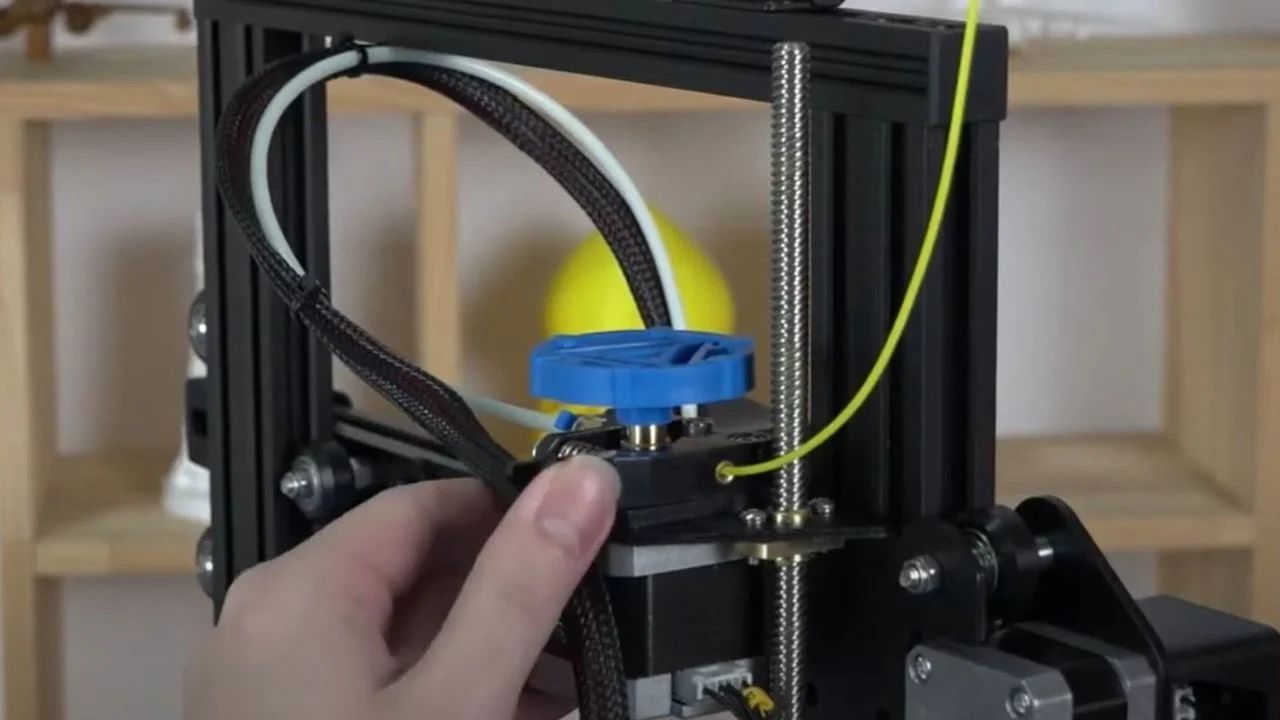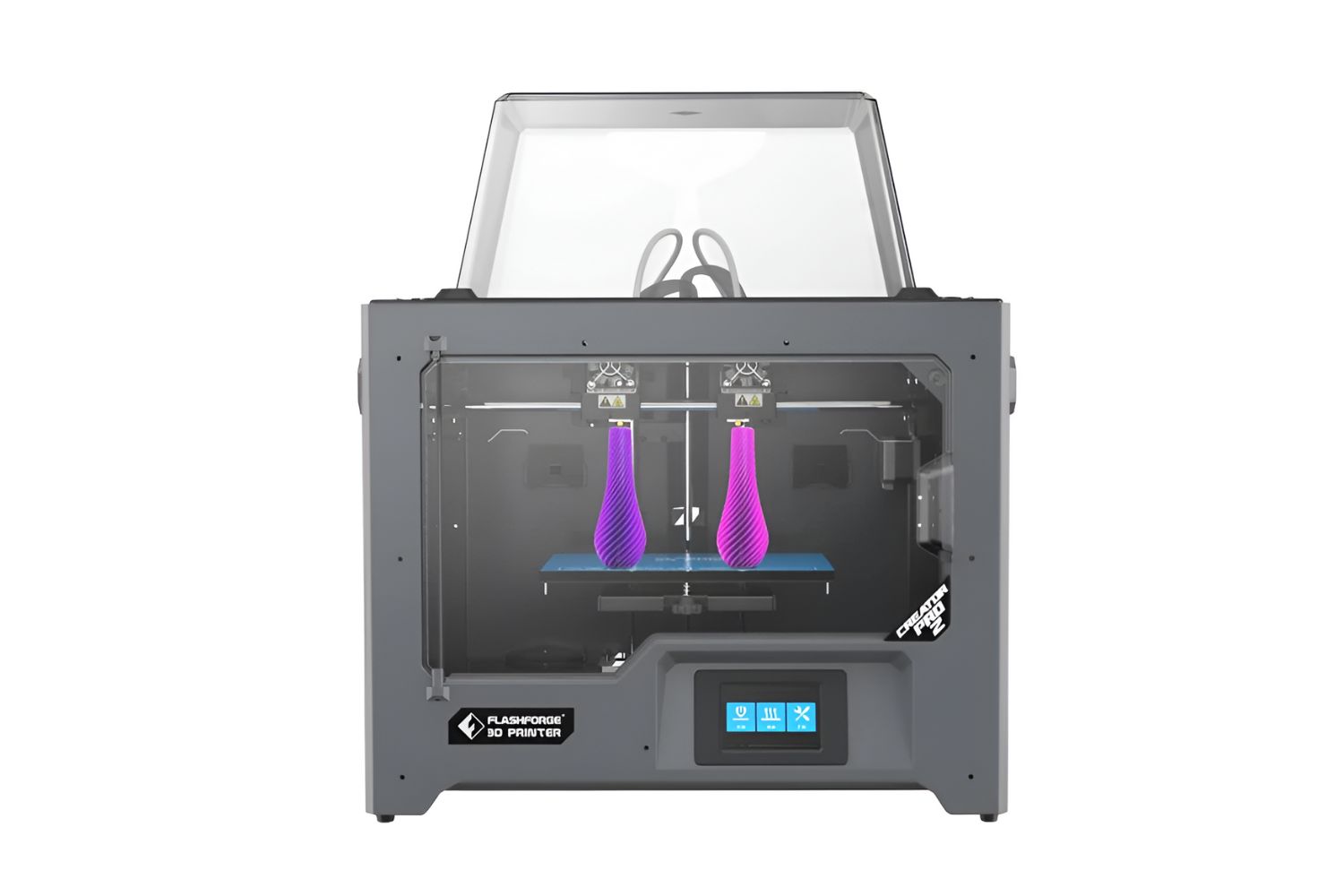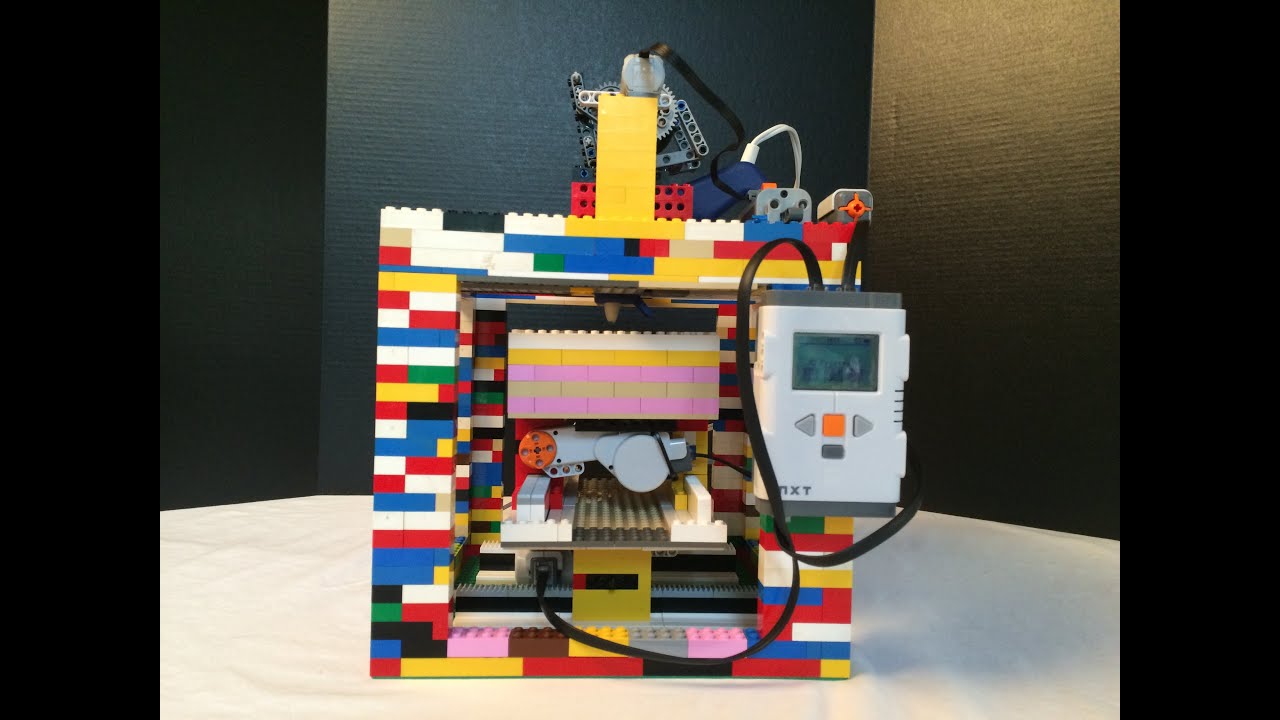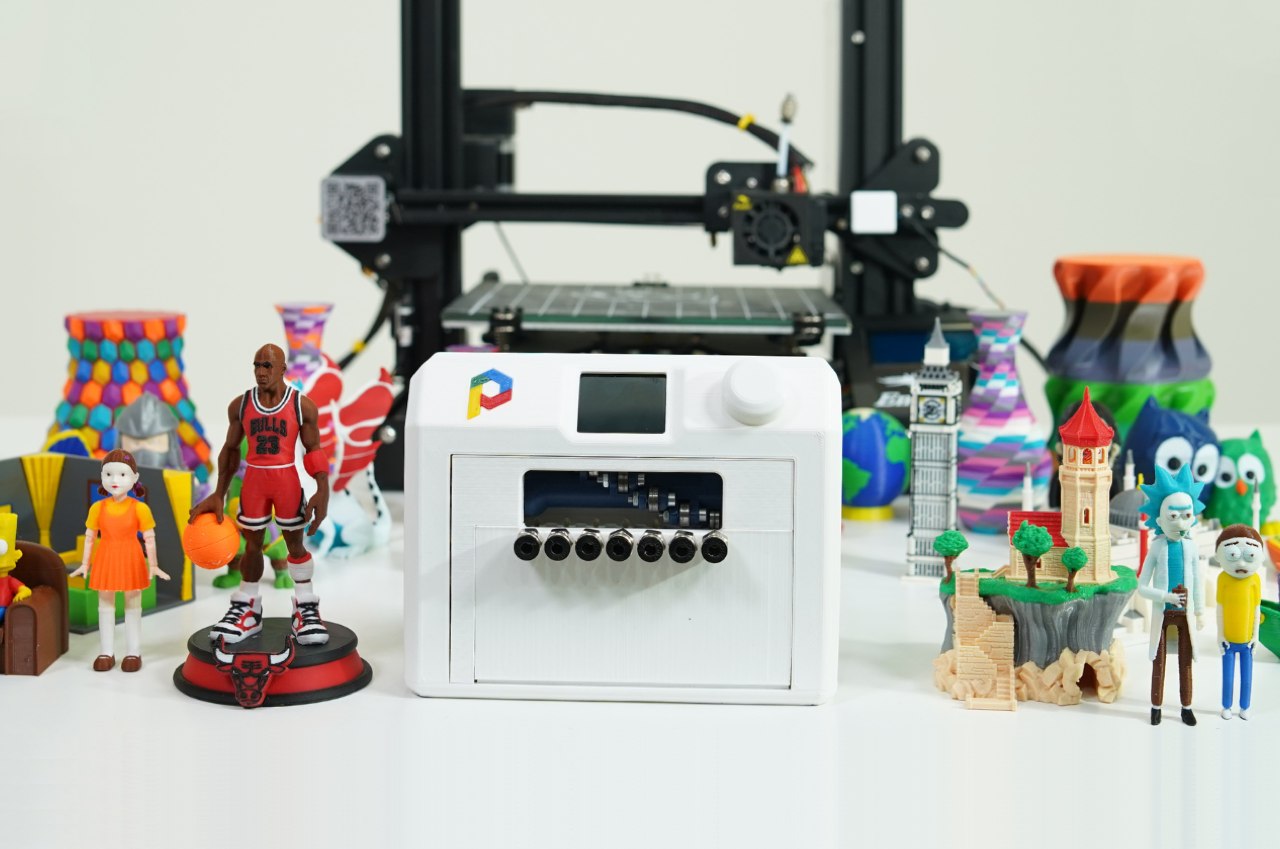What Is An Extruder In 3D Printing
An extruder is an essential component of a 3D printer that plays a crucial role in the additive manufacturing process. It is responsible for precisely depositing the material layer by layer to create a three-dimensional object based on a digital design. This article will delve into the concept of 3D printing extruders and their significance in the printing process.
At its core, an extruder is a motor-driven mechanism that feeds and melts the filament, then deposits it onto the print bed or previous layers. The filament is usually made of thermoplastic materials such as PLA or ABS, which become malleable when heated and solidify when cooled. The extruder melts the filament and pushes it through a tiny nozzle, allowing for precise control over the material deposition.
In addition to filament control, the extruder also regulates the flow and temperature of the material. This control is crucial for achieving optimal print quality and ensuring successful layer adhesion. The extruder carefully modulates the speed and amount of filament being pushed through the nozzle to achieve the desired results, ultimately determining the accuracy, strength, and surface finish of the printed object.
Understanding the key components of an extruder is vital for comprehending the printing process. There are primarily two main parts – the hot end and the cold end. The hot end includes the heater block, heat sink, and nozzle, where all the melting and filament extrusion occurs. The cold end consists of the filament drive gear, cooling fan, and the motor that drives the filament into the hot end.
The extruder’s hot end is responsible for heating the filament to its melting point and guiding it through the nozzle. The nozzle diameter determines the extrusion width, which directly affects the level of detail and precision in the printed object. On the other hand, the cold end ensures the filament is smoothly transported from the spool to the hot end, maintaining a consistent and steady flow.
Different types of extruders exist, each with its own unique design and functionality. The two most popular types are the direct drive extruder and the Bowden extruder. The direct drive extruder is directly mounted on the printer’s carriage and provides precise filament control, making it suitable for printing flexible filaments. In contrast, the Bowden extruder guides the filament through a tube, reducing the weight on the carriage and allowing for faster movements during printing.
Introduction
3D printing has revolutionized various industries by enabling the creation of complex and customized objects with ease. At the heart of this innovative technology lies the extruder, an essential component of a 3D printer. Understanding what an extruder is and how it functions is key to comprehending the 3D printing process.
An extruder is a mechanical device that feeds, melts, and deposits the printing material onto the print bed or previous layers, meticulously building up a three-dimensional object. It acts as the “hand” of the 3D printer, precisely controlling the deposition of the filament layer by layer.
The filament, typically made of thermoplastic materials such as PLA or ABS, is loaded into the extruder. As the filament passes through the extruder, it is slowly melted by heat produced within the extruder’s hot end. Once melted, the extruder pushes the molten material through a tiny nozzle, precisely depositing it onto the print bed or previously printed layers.
The extruder’s ability to accurately control the flow, temperature, and speed of the filament is crucial in achieving high-quality prints. The precise control of filament flow ensures that each layer is deposited with accuracy and consistency, resulting in a well-defined and structurally sound object.
The extrusion process is at the core of 3D printing, allowing for the creation of intricate and complex shapes that would be impossible to produce through traditional manufacturing methods. It offers unparalleled design freedom, allowing designers and engineers to bring their ideas to life with ease.
In this article, we will explore the various components of an extruder, including the hot end, cold end, nozzle, filament drive gear, and cooling fan. We will also discuss the different types of extruders and their respective advantages and limitations.
Understanding the role and functionality of the extruder is vital for optimizing printing parameters, troubleshooting print issues, and achieving the desired print quality. So, let’s dive into the fascinating world of extruders and uncover the crucial role they play in the captivating realm of 3D printing.
What Does an Extruder Do in 3D Printing?
In the realm of 3D printing, an extruder is the primary component responsible for depositing the material onto the print bed or previously printed layers. Its main function is to precisely control the flow, temperature, and speed of the filament, resulting in the creation of intricate three-dimensional objects.
The extruder starts by pulling the filament from a spool and feeding it into the printer’s hot end. The hot end consists of a heated chamber that melts the filament, making it malleable for deposition. Once the filament reaches the desired temperature, it is pushed through a small nozzle, forming a thin and controlled stream of molten material.
The extruder’s ability to control the filament flow is crucial for achieving accurate layer deposition. By precisely adjusting the extrusion rate, the extruder maintains consistent material flow and ensures the correct amount of molten filament is deposited at each point during the printing process. This precise control allows for the creation of intricate geometries and fine details in the printed object.
Moreover, the extruder also plays a vital role in regulating the temperature of the material. Different types of filaments require specific temperatures to achieve optimal printing results. The extruder’s hot end includes a heating element and a temperature sensor that work together to maintain a stable and controlled temperature throughout the printing process. This temperature control is crucial for ensuring proper material flow, adhesion between layers, and overall print quality.
In addition to controlling flow and temperature, the extruder also performs filament retraction and priming. Filament retraction involves pulling the filament back slightly from the nozzle to prevent oozing or stringing during non-printing moves. This helps to ensure cleaner and more precise prints. Filament priming, on the other hand, is the process of pushing a small amount of filament out of the nozzle to ensure proper extrusion at the beginning of a print. This helps to eliminate any air gaps or inconsistencies and ensures a smooth start to the print.
Overall, the extruder is the workhorse of the 3D printer, guiding and controlling the flow of the filament with precision. By regulating the filament’s movement, temperature, and extrusion rate, the extruder ensures accurate and reliable material deposition. This, in turn, leads to the creation of high-quality, functional, and visually appealing 3D printed objects.
How Does an Extruder Work?
Understanding how an extruder works is crucial for grasping the intricacies of the 3D printing process. The extruder performs a series of precise steps to melt the filament, control its flow, and deposit it onto the print bed or previously printed layers. Let’s explore the inner workings of an extruder in more detail.
The extruder begins its work by pulling the filament from a spool, either manually or through a motor-driven mechanism. The filament is guided into the extruder’s cold end, where it encounters the filament drive gear. This gear, connected to a motor, pulls the filament and propels it towards the hot end of the extruder.
As the filament enters the hot end, it encounters a heated chamber. Within this chamber, a heating element raises the temperature to the melting point of the filament. The precise control of the temperature is crucial to ensure that the filament becomes molten but does not get overheated, resulting in uneven flow or degradation of the material.
Once the filament reaches its melting point, it is pushed through a small opening called a nozzle. The nozzle’s diameter determines the thickness of the extruded filament, directly impacting the level of detail and precision in the printed object. Typically, the extrusion width closely relates to the nozzle’s diameter, and adjusting it allows for variations in layer height and print speed.
Within the hot end, the melted filament is under pressure due to the extruder’s continuous force pushing it forward. This pressure builds up and ensures a constant and consistent flow of molten material through the nozzle. By carefully controlling the extrusion rate and pressure, the extruder maintains the necessary material flow for accurate layer deposition.
To prevent oozing or stringing during non-printing moves, the extruder performs filament retraction. It quickly pulls the filament back slightly from the nozzle, reducing the pressure and preventing any unwanted material leakage. Filament retraction is particularly important when printing objects with complex geometries or when using materials prone to stringing, such as flexible filaments.
During the printing process, the extruder continuously moves, depositing the molten material onto the print bed or previous layers. The precise control of the extruder’s movement, combined with the regulated flow of filament, enables the creation of highly accurate and intricate 3D printed objects.
In summary, an extruder in a 3D printer works by pulling, heating, melting, controlling flow, and depositing the filament to build up the object layer by layer. It combines precision control of temperature, extrusion rate, and filament movement to ensure accurate and consistent material deposition. By understanding the functioning of the extruder, one can optimize printing parameters and achieve the desired quality and detail in their 3D prints.
Parts of an Extruder
To fully understand the functionality of an extruder in 3D printing, it is important to familiarize oneself with the various components that make up the extruder. Each part plays a vital role in the extrusion process, ensuring the precise control and deposition of the filament. Let’s explore the key parts of an extruder in more detail.
1. Hot End: The hot end is the section of the extruder where the filament is melted. It typically consists of a heater block, a heat sink, and a nozzle. The heater block contains the heating element that raises the temperature to melt the filament, while the heat sink helps dissipate excess heat, preventing the filament from overheating. The nozzle is a small opening through which the molten material is extruded.
2. Cold End: The cold end is responsible for guiding the filament from the spool to the hot end. It includes the filament drive gear and the motor that drives the filament. The filament drive gear is a toothed wheel that grips and pulls the filament, ensuring a consistent and steady flow towards the hot end.
3. Nozzle: The nozzle is a crucial component of the extruder as it determines the diameter of the extruded filament. Different nozzle sizes allow for variations in print resolution and material flow rate. A smaller nozzle diameter results in finer details but may require slower print speeds, while a larger nozzle diameter allows for faster printing but with reduced detail.
4. Filament Drive Gear: The filament drive gear, also known as the extruder gear or hobbed gear, is responsible for gripping and pushing the filament through the extruder. It features sharp teeth that bite into the filament and ensure a consistent feed rate, preventing slipping or backflow.
5. Cooling Fan: The cooling fan is located near the hot end and helps regulate the temperature of the printed object. It blows cool air onto the recently deposited layers, aiding in the solidification of the molten material. This is particularly important for materials with low melting points or when printing intricate designs with overhangs, as it helps maintain shape and prevent deformation.
These are the primary components that make up an extruder in a 3D printer. Each part contributes to the overall functionality and performance of the extrusion process. Understanding how these components work together allows for better control of the printing parameters and ensures consistent and reliable 3D prints.
Hot End
The hot end is a critical component of the extruder in a 3D printer. It is responsible for heating and melting the filament, allowing for the precise deposition of the molten material. Comprising several key elements, the hot end plays a crucial role in determining the quality and success of the 3D printed object.
At the heart of the hot end is the heater block, which houses the heating element. The heating element, often a resistor or a high-temperature thermistor, generates heat to raise the temperature of the filament to its melting point. The heater block ensures that the heat is concentrated and retained in the hot end, providing the necessary energy for efficient filament melting.
To manage the heat generated in the hot end, a heat sink is usually present. The heat sink helps dissipate excess heat, preventing the filament from overheating. It provides a cooling mechanism to maintain the optimal temperature for filament extrusion, ensuring consistent and controlled material flow. The heat sink is typically made of aluminum or another heat-conductive material to enhance heat dissipation.
Another crucial component of the hot end is the nozzle. The nozzle determines the diameter of the extruded filament and governs the flow rate and resolution of the 3D print. Nozzles come in various sizes, typically ranging from 0.2mm to 1.0mm, with smaller sizes enabling finer details but requiring longer print times. The nozzle’s small opening ensures that the filament is deposited with precision and accuracy, contributing to the overall quality of the printed object.
Within the nozzle, there is a small chamber where the filament is heated and melted. This chamber is responsible for maintaining a consistent and controlled temperature necessary for successful extrusion. The temperature is managed through precise regulation of the heating element, ensuring adequate melting without any overheating or degradation of the filament.
The hot end also ensures proper filament cooling after extrusion. To aid in this process, a cooling fan is often placed near the hot end. The cooling fan blows cool air onto the newly deposited layers, helping solidify the molten material quickly. This is especially important for materials with low melting points or when printing complex designs with overhangs, as it helps maintain shape and prevent deformation.
In summary, the hot end in a 3D printer extruder is a crucial component that enables the controlled melting and deposition of the filament. It consists of a heater block, heat sink, nozzle, and cooling fan, all working together to ensure precise temperature control and effective filament extrusion. By understanding the intricacies of the hot end, users can optimize their printing parameters and achieve high-quality, well-formed 3D printed objects.
Cold End
While the hot end of an extruder in a 3D printer receives much of the attention, the cold end is equally crucial in ensuring the smooth and efficient operation of the extrusion process. Comprising various components, the cold end is responsible for feeding the filament from the spool and guiding it towards the hot end for melting and deposition.
The primary component of the cold end is the filament drive gear. This gear, also known as the extruder gear or hobbed gear, features sharp teeth that grip the filament firmly and propel it towards the hot end. The rotation of the filament drive gear is usually driven by a motor, which controls the speed and force at which the filament is fed into the hot end. The filament drive gear provides the necessary pressure and traction to ensure a consistent and steady flow of filament through the extruder.
To keep the filament in position and prevent it from tangling or causing unnecessary friction, a filament guide tube is sometimes used in the cold end. This tube guides the filament from the spool to the hot end, ensuring a smooth and unrestricted path. In setups using a Bowden extruder, the filament is guided through a longer tube, reducing the weight on the extruder carriage and allowing for faster movements during printing.
In addition to the filament drive gear and filament guide tube, the cold end may also include a tensioning mechanism. This mechanism maintains the necessary tension on the filament, preventing it from becoming loose or slipping during extrusion. Proper tension ensures a consistent and reliable filament feed, resulting in accurate layer deposition and high-quality prints.
The cold end is also responsible for ensuring that the filament is protected and properly routed. Filament spool holders or mounts are commonly used to hold the filament spool securely and prevent it from tangling or becoming entangled during printing. Proper spool alignment and free movement of the filament are essential to maintain the reliable feed and prevent any interruptions or filament jams.
Overall, the cold end of an extruder in a 3D printer plays a crucial role in ensuring the smooth and efficient feeding of the filament into the hot end. It consists of components such as the filament drive gear, filament guide tube, tensioning mechanism, and filament spool holder. Together, these components enable accurate and consistent filament movement, contributing to the overall success and quality of the 3D printing process.
Nozzle
The nozzle is a vital component of the extruder in a 3D printer, responsible for controlling the precise deposition of the molten filament onto the print bed. It is a small, cylindrical piece located at the end of the extruder’s hot end. The size and characteristics of the nozzle significantly impact the final print quality and play a crucial role in achieving desired printing results.
The primary function of the nozzle is to extrude the molten filament in a controlled manner. It features a small opening, typically measured in millimeters, through which the filament is forced to flow. The extrusion diameter directly affects the layer thickness and the level of detail in the printed object. Nozzles with smaller diameters allow for finer details but may result in longer print times, while larger nozzles can produce prints with coarser details but offer faster print speeds.
The nozzle is responsible for shaping the extruded filament as it passes through. The opening at the tip of the nozzle determines the extrusion pattern and the overall look of the printed object. It is crucial to maintain the nozzle’s cleanliness to prevent any blockages or inconsistencies in the filament flow. Regular maintenance and cleaning of the nozzle are necessary to ensure precise and consistent extrusion.
Different nozzle materials are available, with brass and hardened steel being the most common. Brass nozzles are widely used due to their excellent thermal conductivity, allowing for faster heat transfers and more efficient filament melting. Hardened steel nozzles are preferred when working with abrasive filaments that may quickly wear out a brass nozzle. The choice of nozzle material depends on the filament types and printing requirements.
Nozzle clogging is a common issue in 3D printing. It can occur due to various factors, such as debris or residue buildup, inconsistent filament diameter, or improper temperature settings. Regular maintenance and cleaning are essential to prevent clogging and ensure consistent filament flow. In some cases, a blockage may require replacing the nozzle altogether.
When selecting a nozzle, it is important to consider the specific requirements of the print job. The desired level of detail, print speed, and material compatibility are key factors. Experimenting with different nozzle sizes and configurations can help achieve the desired balance between print quality, speed, and functionality.
In summary, the nozzle in a 3D printer extruder plays a crucial role in controlling the extrusion of the molten filament and shaping the printed object. Choosing the right nozzle size and maintaining its cleanliness are essential for achieving high-quality prints. Understanding the characteristics and functions of the nozzle allows for better control and optimization of the 3D printing process.
Filament Drive Gear
The filament drive gear, also known as the extruder gear or hobbed gear, is a critical component of the extruder in a 3D printer. It plays a crucial role in smoothly and accurately feeding the filament into the hot end for melting and deposition. The filament drive gear uses its teeth to grip the filament securely and pushes it through the extruder mechanism, ensuring a consistent and steady flow of filament during the printing process.
The primary function of the filament drive gear is to provide traction and control the movement of the filament. It is usually made of hardened steel or another durable material to withstand the constant pressure and friction exerted by the filament. The shape and orientation of the gear’s teeth are carefully designed to optimize the grip on the filament surface, ensuring a reliable and consistent feed.
The filament drive gear is typically connected to a motor that drives its rotation. The rotational movement of the gear advances the filament, propelling it towards the hot end for the melting and extrusion process. By adjusting the motor speed, users can control the filament flow rate, allowing for precise control over the amount and timing of filament deposition.
The design and configuration of the filament drive gear differ among printers, with variations in tooth sharpness, spacing, and diameter. These variations can impact the grip and effectiveness of the gear in feeding the filament. Some extruders employ dual-drive or geared extrusion systems where multiple gears work together to further enhance the traction and accuracy of filament feeding.
Proper tension between the filament and the filament drive gear is crucial for maintaining a consistent and reliable feed. Too much tension might deform or damage the filament, while too little tension could lead to slips or irregular extrusion. Adequate tension ensures that the filament moves smoothly and evenly through the extruder, ensuring precise control over the material flow.
Over time, the teeth of the filament drive gear may become worn or clogged with debris from the filament. Regular cleaning and maintenance of the gear are necessary to prevent slipping, filament jamming, or inconsistent extrusion. Keeping the filament drive gear in good condition helps maintain smooth filament feeding and contributes to the overall print quality.
In summary, the filament drive gear is a crucial component in the extruder mechanism of a 3D printer. Its function is to grip and push the filament towards the hot end for melting and extrusion. By providing traction and maintaining tension, the filament drive gear ensures a consistent and steady flow of filament during the 3D printing process, resulting in accurate and high-quality prints.
Cooling Fan
The cooling fan is an essential component of the extruder in a 3D printer, responsible for facilitating the cooling process of the printed object. It plays a critical role in maintaining the shape, stability, and overall quality of the printed layers, especially during intricate or complex prints.
The cooling fan is typically located near the hot end of the extruder. Its purpose is to blow cool air onto the recently deposited layers of molten material, promoting rapid solidification. By rapidly cooling the material, the cooling fan helps prevent deformation, sagging, or warping of the printed structure. This is particularly important when working with materials with low melting points, where proper cooling ensures stability and accuracy.
The cooling fan acts as a countermeasure to the heat generated by the hot end, preventing excessive heat buildup in the layers. It aids in the solidification process, allowing each layer to harden before the next layer is deposited. Without adequate cooling, the heated layers may remain soft, leading to poor layer adhesion, rough surfaces, or potential collapse of the printed object.
The cooling fan’s speed and direction can be adjusted to accommodate different printer and material requirements. For certain prints, lower fan speeds or even disabling the cooling fan might be necessary to achieve specific effects or work with materials that do not require rapid cooling. However, for most common materials like PLA or ABS, the cooling fan is typically run at maximum speed to ensure optimal performance and print quality.
The cooling fan’s position and effectiveness could vary depending on the printer’s design and extruder configuration. Some printers feature multiple cooling fans for better airflow distribution and cooling efficiency. Additionally, accessories like ducts or shrouds may be used to concentrate the airflow to specific areas, allowing for more precise cooling control, especially for overhangs or intricate details.
It is important to note that improper cooling can have a negative impact on print quality. Insufficient cooling may lead to excessive heat transfer to nearby layers, causing deformation or excessive material movement. On the other hand, excessive cooling may lead to sudden thermal changes, creating cracks or weak layer adhesion.
Regular maintenance of the cooling fan is crucial to ensure consistent performance. Dust or debris accumulation can hinder the airflow and reduce cooling effectiveness. Cleaning the cooling fan periodically and checking for any mechanical issues will help maintain proper cooling and avoid print quality problems.
In summary, the cooling fan in a 3D printer’s extruder is critical for maintaining the shape, stability, and quality of the printed layers. It provides rapid cooling to solidify the molten material, preventing deformation and ensuring proper layer adhesion. Understanding the role and proper use of the cooling fan contributes to achieving high-quality prints and successful 3D printing outcomes.
Types of Extruders
There are various types of extruders used in 3D printing, each with its own unique design and functionality. The choice of extruder depends on specific needs, materials being printed, and desired print quality. Let’s explore two common types of extruders: direct drive extruders and Bowden extruders.
1. Direct Drive Extruder: A direct drive extruder is a type of extruder that is directly mounted onto the printer’s carriage, close to the hot end. It provides a more compact setup as the extruder and hot end are integrated into a single unit. In this configuration, the filament is fed directly into the extruder gear, which is connected to the motor. This direct feeding allows for precise control over filament movement, making the direct drive extruder suitable for printing with a wide range of materials, including flexible filaments. The shorter filament path also reduces the risk of filament slipping or jamming. However, the added weight of the direct drive extruder on the printer’s carriage can affect the overall speed and accuracy of printing, particularly during quick directional changes.
2. Bowden Extruder: The Bowden extruder operates differently from the direct drive extruder. In a Bowden setup, the extruder gear is not located directly on the carriage but is instead positioned at a fixed location. The filament is guided through a long tube, known as the Bowden tube, from the filament spool to the hot end. The tube reduces the weight on the printer’s carriage, enabling faster movement during printing. This configuration is known for providing cleaner and more accurate prints due to the reduced vibration caused by the lighter carriage. However, the Bowden setup requires additional mechanisms to ensure proper tension and precise control of filament feeding. It is commonly used for printing materials that do not require precise filament control, such as standard PLA or ABS filaments.
These two types of extruders offer different trade-offs in terms of precision, material compatibility, and printing speed. Direct drive extruders excel at printing with flexible filaments and delivering high accuracy at lower speeds. On the other hand, Bowden extruders allow for faster prints but might sacrifice some level of precision, making them less suitable for flexible filaments or prints that require intricate details.
It is worth noting that hybrid extruders, which combine elements of both direct drive and Bowden setups, are also available. These extruders aim to provide the benefits of both designs by using a remote extruder gear with a shorter Bowden tube. However, such hybrid designs may bring their own set of challenges in terms of tension, filament slipping, or additional weight on the carriage.
Ultimately, the choice between a direct drive extruder and a Bowden extruder depends on the specific requirements of the print job. Factors such as material compatibility, desired print quality, ease of use, and preferred print speed should all be considered when selecting the most suitable extruder type for a given application.
Direct Drive Extruder
A direct drive extruder is a type of extruder commonly used in 3D printers, known for its precise filament control and versatility. Unlike Bowden setups, a direct drive extruder is directly mounted onto the printer’s carriage, close to the hot end. This configuration offers several advantages and is preferred for certain applications.
The key advantage of a direct drive extruder is its ability to provide precise control over filament movement. The filament is fed directly into the extruder gear, which is connected to a motor. This direct feeding mechanism allows for accurate and responsive filament control, making direct drive extruders well-suited for printing flexible filaments or materials that require increased extrusion control.
The shorter filament path in a direct drive setup reduces the risk of filament slipping or jamming. With the extruder positioned close to the hot end, there is minimal distance for the filament to travel, ensuring consistent and reliable material flow. This direct and controlled filament feed contributes to the overall print quality, promoting accurate layer deposition and improved adhesion between layers.
Direct drive extruders also have the advantage of being compatible with a wide range of materials. The precise filament control allows for successful printing of flexible filaments, which tend to be more challenging with Bowden setups. Additionally, materials that require precise temperature control or specific extrusion rates can be effectively printed using a direct drive extruder.
Despite its advantages, direct drive extruders have some limitations worth considering. The added weight of the extruder on the printer’s carriage can impact the overall speed and accuracy of printing, especially during quick directional changes. This can lead to potential artifacts or imperfections in the printed object, particularly for complex designs or high-speed printing scenarios.
Furthermore, the proximity of the extruder to the hot end can introduce heat transfer issues, such as heat creep. Heat creep occurs when heat from the hot end travels up the filament, causing premature melting and clogging in the cold end or heat sink area. Proper heat management and thermal isolation between the hot end and cold end are important to mitigate this problem.
In summary, direct drive extruders offer precise filament control, making them suitable for printing flexible filaments and materials with specific requirements. Their proximity to the hot end ensures consistent filament flow and better material deposition. However, the added weight on the printer’s carriage and potential heat transfer issues should be considered when choosing a direct drive extruder for a particular application. By weighing the trade-offs and considering the specific printing needs, users can determine if a direct drive extruder is the right choice for their 3D printing projects.
Bowden Extruder
The Bowden extruder is a type of extruder commonly used in 3D printers that offers unique advantages in terms of print speed and reduced weight on the printer’s carriage. In a Bowden setup, the extruder gear is positioned at a fixed location, while the filament is guided through a long, flexible tube called the Bowden tube. The Bowden extruder is well-suited for specific applications where these advantages outweigh the potential drawbacks.
One of the key advantages of a Bowden extruder is its ability to reduce the weight on the printer’s carriage. By positioning the extruder gear away from the hot end, the carriage can move more freely and at higher speeds during printing. This results in faster and more efficient prints, particularly when dealing with large objects or intricate designs that require complex movements.
The reduced weight on the carriage also minimizes the vibrations and potential artifacts caused by the extruder’s movement. This can lead to improved print quality, especially for prints requiring high precision and fine details. The absence of the extruder gear on the carriage also simplifies the design, allowing for a more compact and lightweight printer setup.
Bowden extruders are commonly used for printing materials that do not require precise filament control, such as standard PLA or ABS filaments. The longer Bowden tube provides some level of filament storage, allowing for slight buffering and smooth filament delivery. However, the tube’s flexibility can introduce some challenges, such as increased filament resistance and potential pressure issues, which can affect the accuracy and consistency of extrusion.
Another consideration with the Bowden extruder is the increased difficulty in printing flexible filaments. The longer distance between the extruder gear and hot end, coupled with the flexibility of the Bowden tube, can result in reduced control over filament movement and potential extrusion issues. However, with the right configuration and adjustments, successful printing of flexible filaments can still be achieved with a Bowden extruder.
It is important to note that the Bowden extruder requires additional mechanisms to ensure proper tension and precise control of filament feeding. Retraction settings often need to be adjusted to compensate for the additional filament travel distance in the Bowden tube, minimizing the chances of stringing or oozing during non-printing moves.
In summary, the Bowden extruder offers advantages such as reduced carriage weight and increased print speed for specific applications. It is well-suited for prints that do not require precise filament control and are less sensitive to potential pressure issues. However, the Bowden setup may present challenges with flexible filament printing and requires additional mechanisms to maintain tension and proper filament feeding. By considering these factors, users can determine whether a Bowden extruder is the right choice for their 3D printing needs.
Conclusion
Understanding the role of an extruder in 3D printing is essential for achieving successful and high-quality prints. The extruder acts as the “hand” of the 3D printer, controlling the flow, temperature, and deposition of the filament to build up the 3D object layer by layer. By choosing the right extruder and optimizing its settings, users can achieve optimal print results and unlock the full potential of their 3D printer.
The various components of an extruder, including the hot end, cold end, nozzle, filament drive gear, and cooling fan, work together to ensure consistent filament feed, accurate material deposition, and proper cooling. Understanding how each component functions allows for troubleshooting and fine-tuning to achieve the desired print quality.
Different types of extruders, such as direct drive and Bowden extruders, offer unique advantages and trade-offs. Direct drive extruders excel at precise filament control and are suitable for printing with flexible materials. Bowden extruders, on the other hand, allow for faster prints and reduce the weight on the carriage, enabling smoother and more efficient movements during printing.
Ultimately, the choice of extruder depends on specific printing requirements, including material compatibility, desired print quality, and preferred printing speed. By understanding the capabilities and limitations of each extruder type, users can make informed decisions and select the extruder that best aligns with their needs.
In conclusion, the extruder is a central component in 3D printing that plays a critical role in the additive manufacturing process. Its ability to precisely control filament flow, temperature, and deposition is vital for achieving accurate and high-quality 3D prints. By understanding the intricacies of the extruder, users can optimize their printing parameters, troubleshoot issues, and unlock the full potential of their 3D printer.







